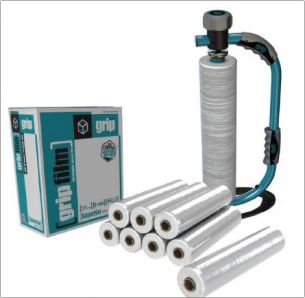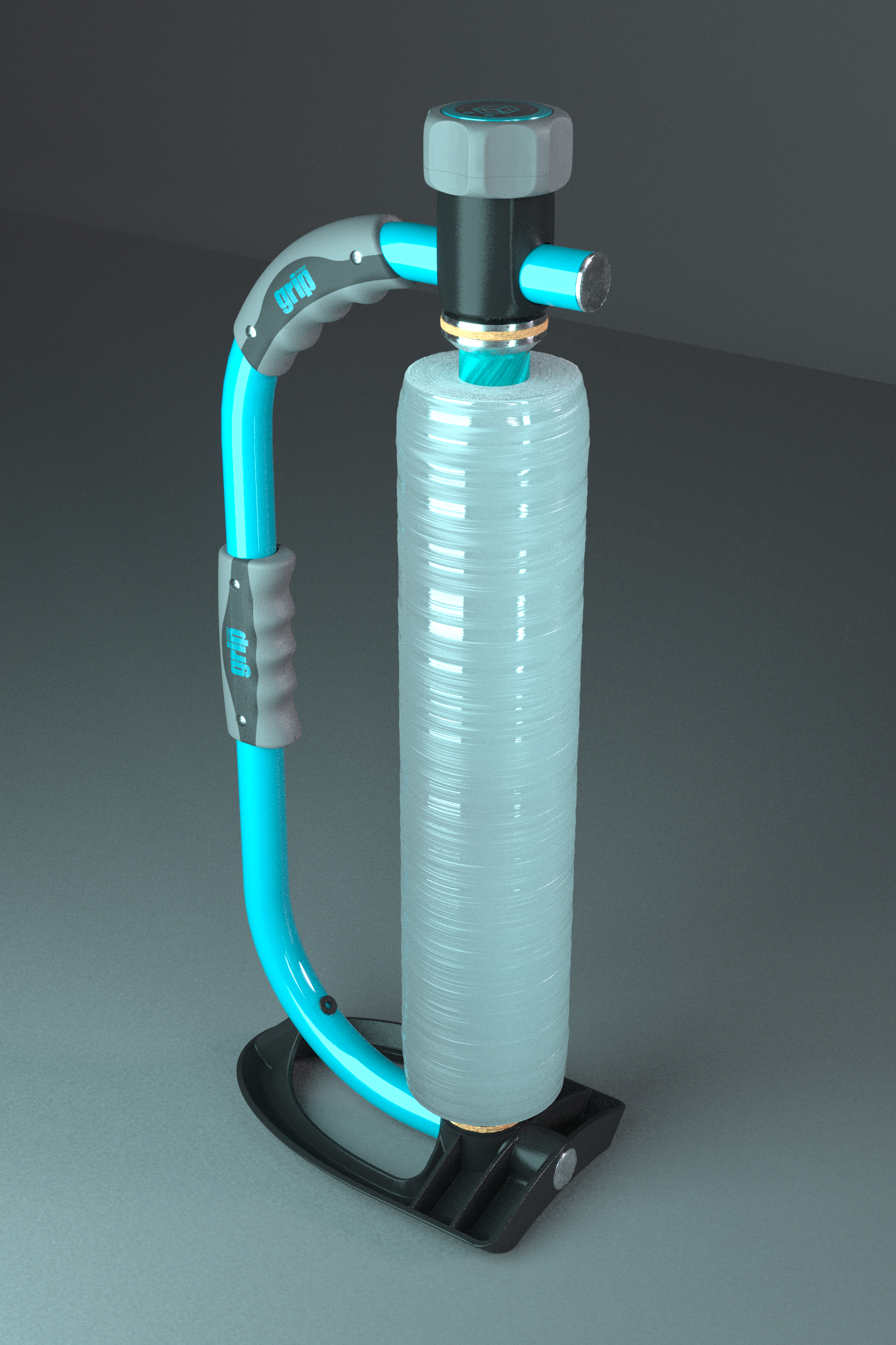What is stretch film
Stretch film is a very widely used,
versatile plastic packaging material, also known as pallet wrap. The most
commonly used stretch films are applied to a pallet, either by hand or machine,
to secure the goods for transportation and storage.
There are many different variations,
properties, thicknesses and often they can all look the same, however there are
two main types of stretch film; hand film and machine film. Understanding how
stretch films are made and what their differences are will help you choose the
best type of stretch film for your operations.

How are stretch films made
There are two completely different
production processes when it comes to manufacturing stretch film, bespoke to
both Cast and Blown film. There are several features that both films share,
however the production process plays a key part in making the films fit for
different purposes.
There basic steps in the manufacturing
processes are as follows:
- Resin preparation: Stretch film is made up of a unique blend of polymers, including various different additives such as pigments, UV resistance, and tackifiers. The LLDPE resin is mixed with these additives, such as colorants and stabilizers, to achieve the desired properties of the film. Once the correct polymers have been loaded, the film extrusion process begins.
- Extrusion: Firstly, the resin mix heated and melted until it is molten and has reached the correct viscosity. What happens next is what makes Cast and Blown film different. The molten material is forced through a flat die to begin the cooling and shaping process.
- Cast film is cooled by passing the flat sheet through a series of large rollers, which cool and solidify the material. This process is known as casting because the resin in cast onto the chilled roller which gibes the film a smooth, transparent surface.
- Blown film is a very different extrusion process to cast. The molten material is cooled by inflating the resin into a very large bubble, several meters tall. This causes it to expand and become thinner as it cools. The size and thickness of the bubble is carefully monitored and controlled to ensure the film has the desired properties before it is fed into the machine to be stretched.
- Winding: The stretched film is then wound onto large rolls, called
mother rolls, ready for the slitting process to begin. - Slitting: The large rolls of film are then slit into smaller
rolls of various widths, depending on the desired product specification.
These are packaged and shipped to the customer.
During the production process, various factors such as the resin formulation, stretching conditions, and cooling rates will affect the properties of the film, such as its puncture resistance, opacity, and cling. Therefore, manufacturers carefully control these variables to produce stretch film with consistent quality and performance.

Blown Film
Blown stretch film is a popular film known for its superior strength and puncture resistance. It’s versatile properties mean blow film is ideal for wrapping a variety of products from lightweight items to heavy loads.
Pros | Cons |
High level of cling | Noisy unwind |
Tear and puncture resistant | Slightly hazy |
Stronger load holding |
|
High degree of memory |
|
Cast Film
Cast film is the world’s most used stretch film, recognised for its quiet unwind and clear optics. Cast is used in a wide range of applications from the food industry to industrial and agricultural operations.
Pros | Cons |
Quiet unwind | Low cling |
High tear resistance | Limited puncture resistance |
Consistent thickness |
|
Clear optics, high transparency |
|
Different Types of Stretch Film
Whilst the market primarily uses Cast and Blown films, there are different variations of film used in some operations, often due to unique products or conditions.
An obvious difference between films is the application method of either by machine or by hand. Hand film dispensers are commonly used to make application of manual films easier and safer, whilst some large scale operations have built in stretch wrapping machines.
Machine film has some superior qualities over hand film such as faster and more efficient wrapping, safer application and a more consistent wrap resulting in better load stability. This film is available in Blown and Cast and some speciality types. Although machine films are very efficient, there is a much larger set-up and maintenance costs involved compared to hand films. Very large scale and fast paced operations often prove the benefits of stretch wrapping machines.
Hand stretch wrap, sometimes referred to as hand film and manual pallet wrap, is commonly used in small to medium sized operations, however the efficiency and safety benefits of the right stretch film applicator are being proved by many larger scale operations.
Tinted stretch film also known as coloured wrap, is popular for warehouse colour coding and multiple site locations for easy identification of destination or dispatch location.
For some security conscious organisations, opaque pallet wrap is a necessity to prevent the goods being identified from the outside. This is most common in black, however white opaque film is also popular in hot climates as it reflects heat and protects the goods from direct sunlight.
There’s a wide range of speciality films such as perforated, anti-static and VCI stretch films that were designed for niche markets. These often require a more complex manufacturing process that fits the clients specific requirements.
Evolution of stretch films
There’s a lot of history behind the thousands of tons of pallet wrap that’s sold today. No one has managed to put an exact date on the invention of stretch film, although many have tried to claim the inventor title!
Before stretch film was available companies used anything they could find to try and secure their goods together which was time consuming and very unreliable. It became very popular in the mid nineteen hundreds when organisations, specifically supermarket chains, set up large warehouses for distribution to multiple sites.
Companies started using their own cling films to secure their goods to the pallet for transport, which also unveiled other benefits such protection from moisture and dust. Pallet wrap began to become more and more efficient as companies explored new manufacturing processes and materials.
The first Low Density Polyethylene (LDPE) and Polyvinyl Chloride (PVC) stretch films were used in 1972 as secure loads became a priority for many businesses. From then on, manufacturers continued to improve the strength and tear resistance of the films and today there’s a huge range of thicknesses and types of stretch film available.
Is shrink film the same as stretch film
Shrink film and stretch film have very different uses but are very commonly mistaken for the same product, when there is actually a significant difference between the two. The most common request is people inquiring about ‘shrink film’ when they really mean ‘stretch film’.
Shrink film is a tight plastic packaging that is often used within the food manufacturing industry. It’s the plastic wrap that binds together products such as bottled water or energy drinks. The name comes from literally shrinking the plastic film around the products. There is an increased security on items that have been shrink wrapped as it’s easy to see if the packaging has been tampered with.
Stretch film is a plastic wrap that can be applied by hand or machine and is usually used to secure goods to a pallet for transportation and storage purposes.
Conclusion
The manufacturing of stretch films is a complex and unique process, different for each variant. Despite there being many different variations and manufacturing methods, stretch film is one of the most well recognised products in the packaging industry today.
No operation is the same and there will be a variety of factors to consider when choosing the best solution for you. Due to advancements and incredible technology, you can be sure to source the highest quality stretch film, best suited to your requirements.

